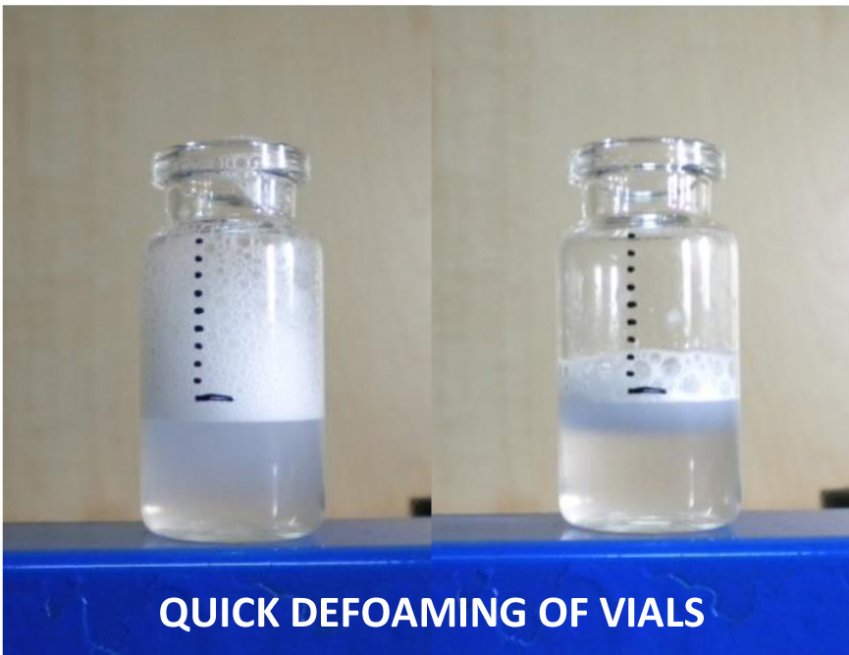The antifoaming agent penetrates into the foam system in the form of fine particles. When the foam is to be produced, the antifoaming agent particles present in the system can rapidly destroy the elastic film of the bubbles and suppress the generation of the foam problem.

If the foam has been produced, the added defoamer contacts the foam, i.e., captures the hydrophobic chain end of the foam surface, rapidly spreading, forming a very thin double film layer, further diffusing, layering intrusion, replacing the film wall of the original
foam problem.
The surface tension of the defoaming agent itself is very low, and the film wall of the bubble film containing the antifoaming agent portion can be gradually thinned. However, the film is strongly pulled by the surrounding surface tension, and the entire bubble generates an imbalance of stress, which causes the bubble to rupture.
The defoaming agent must be a liquid that is easy to spread on the surface of the solution, and the defoaming agent enters the bilayer oriented film of the foam, which destroys the mechanical balance of the oriented film and acts as a foam breaking.
The faster the defoaming agent spreads on the surface of the solution, the thinner the liquid film becomes, the critical thickness is quickly reached, the foam damage is accelerated, and the defoaming effect is enhanced.
Defoamers with excellent performance must be compatible with antifoaming agents and antifoaming agents. They not only can quickly break the foam, but also prevent foam production for a long time.
Foaming reason
However, the specific causes of foam are various, summed up their commonalities, and there are three reasons: gas-liquid contact, foam-containing materials, foaming speed is higher than bubble breaking speed. The above three reasons determine the factors affecting the stability of the foam, which are summarized as follows: the size of the bubble diameter, the type and concentration of the foam aid contained in the solution, the synergistic effect of the surfactant, the viscosity of the foaming liquid, and the permeability of the bubble. The combination of solute and solvent, temperature, surface charge, pH and degree of impact.
General defoaming method
Stable bubbles that are constantly flowing and overflowing often make people feel overwhelmed. If the foam is harmful and is limited by the volume of the device and is not allowed to wait for natural defoaming, measures must be taken to effectively eliminate this harmful foam. During the foaming process, the free energy of the system increases, so it is not a spontaneous process. Without foaming conditions, no foam is produced. Therefore, the basic principle of the defoaming method is nothing more than to eliminate the cause of foaming, or to offset or destroy the foaming conditions.
1. Eliminate the cause of foaming When you can understand the cause of foaming, try to eliminate the cause of foaming, which is the fundamental measure for defoaming. a. avoid unnecessary bubble contact; b. remove unnecessary foam aid; c. make the bubble breaking speed higher than the foaming speed.
2. Physical method. a. Change temperature; b. Change pressure; c. Use high frequency sound waves; d. Use radiation.
3. Mechanical method. a. stirring; b. fluid jetting; c. centrifugal foam breaking machine; d. needle breaking foaming machine; e. nozzle type bubble breaking machine.
4. Chemical method. a. Add a surfactant of the opposite type or add a substance that reacts with the foam aid; b. Add a substance that causes the foam aid to coagulate or precipitate; c. Change the pH; d. Spray a low surface tension The vapor of the substance; e. Adding an antifoaming agent.
 中文
中文
 EN
EN


